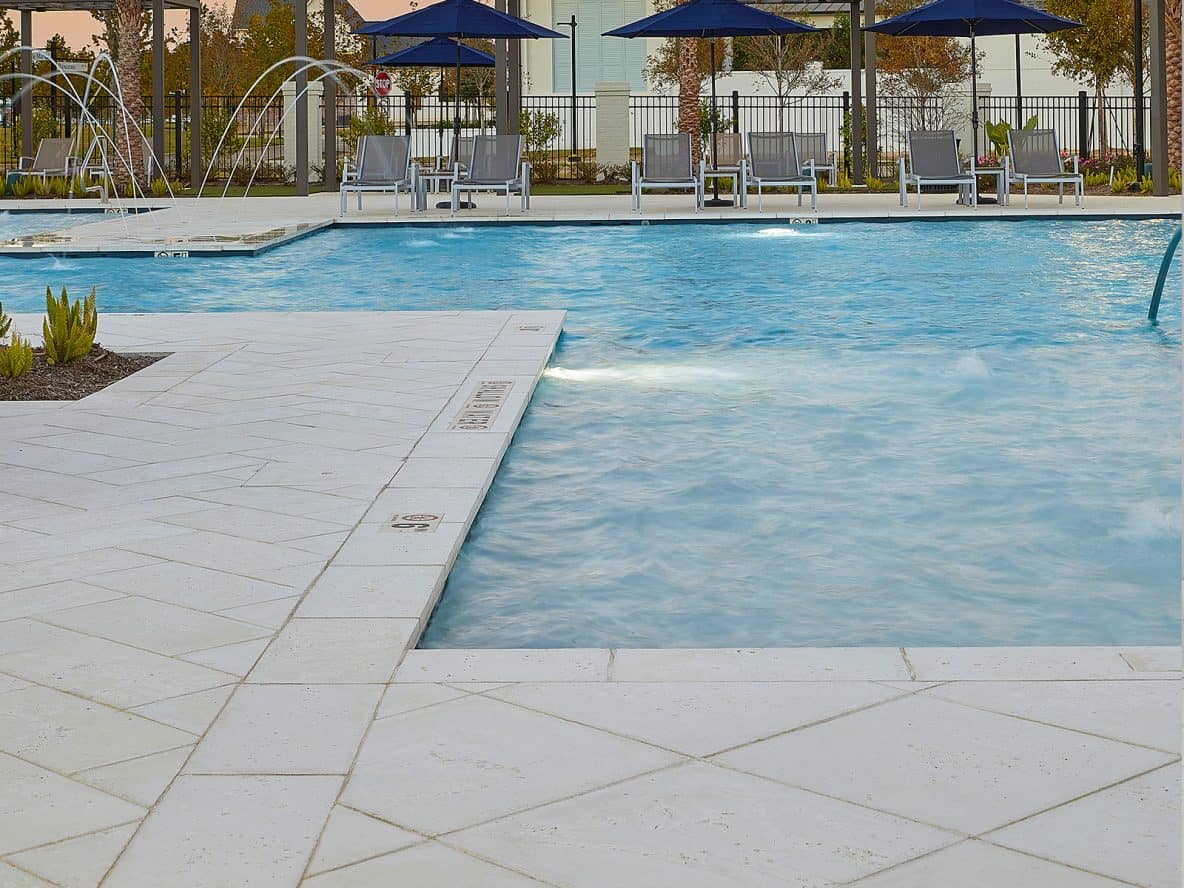With consumers, homeowners, and builders becoming more concerned about the environment, it’s little wonder that landscape architects and designers are constantly looking for eco-friendly and sustainable building and design solutions for constructing patios and other hardscapes. The choice of materials is only part of the sustainability equation; there are also concerns about chemicals released during manufacturing, as well as the amount of fuel it takes to make, quarry and/or ship materials to the building site.
Peacock Pavers is pleased to be considered an eco-friendly patio paver solution that helps builders reduce their carbon footprint. Let’s take a deeper dive into this topic and then explore four of the most eco-friendly patio paver options available today.
What Makes a Paver Eco-Friendly?
Good question! Let’s answer it by first differentiating between eco-friendly and non-eco-friendly materials. What makes a certain paver solution “green” or better for the environment than others?
Recycled and/or Recyclable Materials
The first and perhaps most important factor in eco-friendliness is our ability to reduce the amount of waste we create. Any paving solution created from recycled material, or materials that can be recycled, will reduce the amount of waste going into our landfills and is therefore considered to be environmentally friendly.
Permeability of Material/Laying Pattern
The next consideration is whether the paver (or paver laying pattern) is permeable — that is, whether or not water can seep through it. Drinking water is one of our most precious natural resources. Non-porous materials cause stormwater runoff to drain into the sewer systems where the water must be treated with chemicals if it is to be reused for drinking.
Permeable pavers, on the other hand, allow rainwater to drain through into the groundwater, replenishing the underground aquifers from where we get much of our drinking water. Laying the pavers with soil between them allows water to seep through as well. Permeable concrete, therefore, offers more environmental sustainability than non-porous surfaces like asphalt.
Low-Impact Use of Resources
A third factor to look at is how much “fossil fuel” is required to create and/or ship the pavers — not only in the manufacturing/quarrying process but also during transport.
Fossil fuels release many pollutants into the environment when they are burned, including harmful amounts of carbon dioxide. Surprisingly, to some, natural stone is not considered an eco-friendly paver because it requires a great deal of fuel to quarry and cut those paving stones, not to mention the fuel consumed in transporting the stone — sometimes as far as halfway around the world. Other paver materials, like concrete, require much less fuel to manufacture and ship, so they are more eco-friendly.
Eco-Friendly Paver Options
Now that we’ve identified what makes a paver eco-friendly, let’s look at four specific eco-friendly paving options for patios and other outdoor living spaces.
Recycled/Recyclable Materials
One of the best ways to protect the environment is to reduce waste — and one of the best ways to do that is by using pavers made either from recycled materials or materials that can be recycled. Concrete pavers made from recyclable concrete are an outstanding example of an eco-friendly patio solution.
Porous Paver Grids
Another option: lay your pavers in an open concrete grid pattern — that is, lay your pavers with additional open area between them. Many landscaping projects incorporate the use of gravel or sod between pavers, rather than grout, to resemble a cobblestone or stepping stone appearance as part of their garden design. Open grids give plenty of opportunity for rainwater to seep between the pavers and replenish the groundwater below.
Pervious Pavers
Pervious pavers are specially designed to allow rainwater to seep directly through the paver material into the ground. According to the Stormwater Report, “as water runs through, the pavers filter urban pollutants. Like grass, pervious pavers let the ground below breathe. These pavers also allow tree roots and their supporting microbes to interact.”
Permeable Pavers
Permeable pavers are often confused with pervious pavers, but they are quite different. Permeable pavers are designed to allow rainwater to pass around the paver (in the joints, which are filled with crushed aggregate material) rather than through it.
Peacock Pavers are an eco-friendly choice that enables architects and designers to enhance curb appeal while protecting the environment. Our pavers are made responsibly from recyclable concrete, require far less fuel than quarrying or transporting natural stone, look very attractive in an open concrete grid pattern, and can even help your project qualify for LEED certification.
To learn more about using our eco-friendly concrete pavers for your next hardscaping project, contact us for a quote today.
 |
| 
